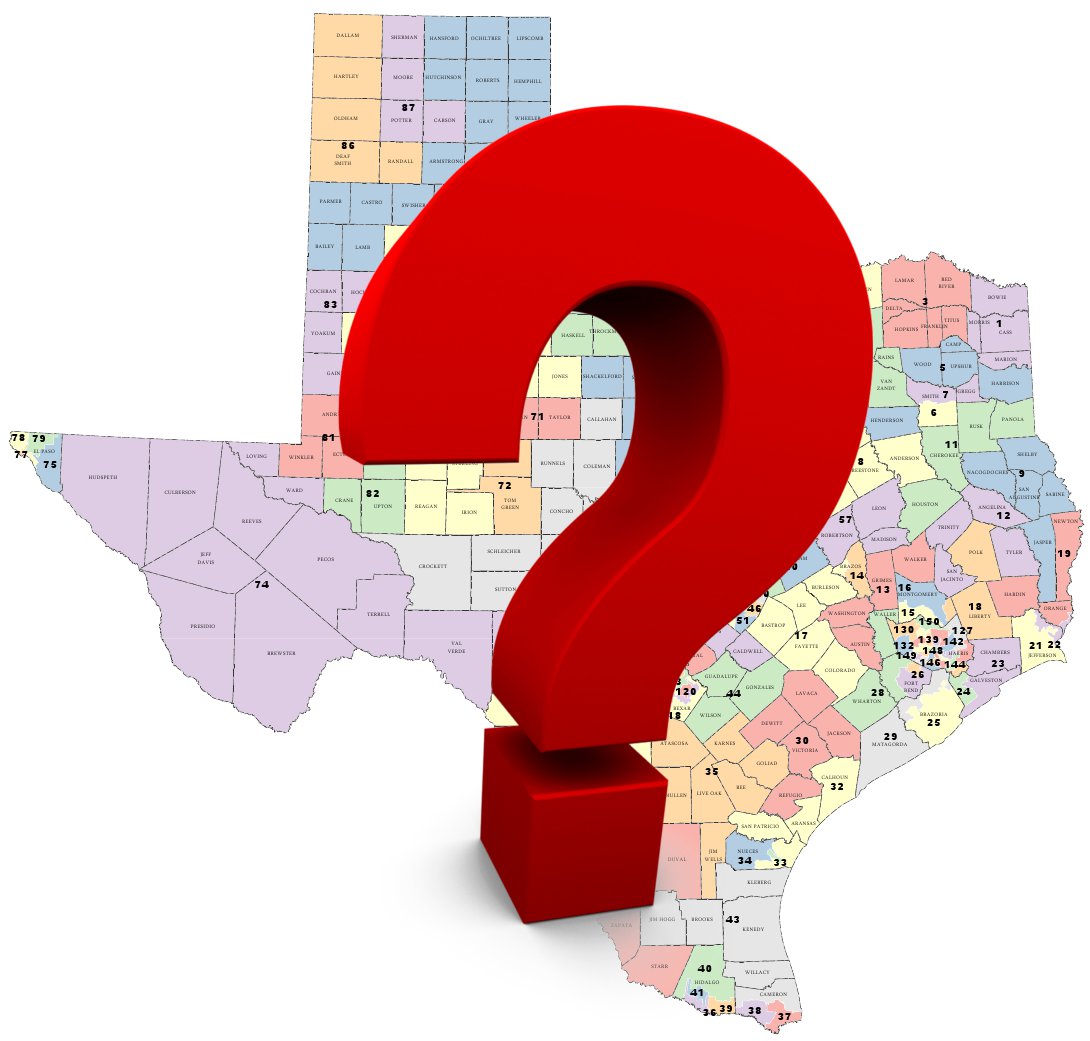 It sounds simple enough. Redraw Texas’ district lines to account for the 4.3 million additional people that now call Texas home. But then add to that the opinions of opposing political parties, civil rights groups, courts and county election officials, and the process of drawing the new state and federal district lines becomes as difficult as trying to pin JELL-O® to the wall. In order to cut through a bit of the confusion, we provide the following timeline of events that led to the current situation we are in: no maps drawn and primaries fast approaching.
It sounds simple enough. Redraw Texas’ district lines to account for the 4.3 million additional people that now call Texas home. But then add to that the opinions of opposing political parties, civil rights groups, courts and county election officials, and the process of drawing the new state and federal district lines becomes as difficult as trying to pin JELL-O® to the wall. In order to cut through a bit of the confusion, we provide the following timeline of events that led to the current situation we are in: no maps drawn and primaries fast approaching.
- As a result of Texas’ population growth in the 2010 census, the state was awarded four additional congressional seats for the 2012 elections. The Republican-majority Texas Legislature devised a redistricting plan during its regular session in 2011.
- Under the Voting Rights Act of 1965, every redistricting plan for Southern states with a history of racial discrimination must obtain “preclearance” (i.e.- approval) from the U.S. Justice Department.
- Texas’ plan has not yet received Justice Department preclearance; however, it is now 2012 and elections need to take place. Rather than the legislature-drawn maps applying in the interim, Democrats and several civil rights groups sued the State of Texas in federal district court to have the legislature-drawn maps thrown out because they violated the Voting Rights Act of 1965 by diluting the representation of minority voters. The 2010 Census demonstrated that all of Texas’ population growth occurred as a result of an increased Latino population.
- In December 2011, the San Antonio Federal District Court agreed with those suing the State of Texas, and ruled that the maps drawn by the Republican-dominated Texas Legislature during its 2011 session violated the Voting Rights Act of 1965.
- After the San Antonio court’s ruling, the State of Texas took two actions: 1) Appealed the decision to the U.S. Supreme Court; and 2) Filed a separate case in the federal district court in Washington D.C., which also has jurisdiction over such matters.
- On January 20, 2012, the U.S. Supreme Court overturned a San-Antonio federal district court ruling which provided for judicially-drawn district maps for state and federal elected officials.
- The U.S. Supreme Court ruled that the San Antonio federal court erred to the extent that it “exceeded its mission” to draw interim maps for the 2012 elections, and wrongly “substituted its own concept of ‘the collective public good’ for the Texas Legislature’s determination…”
- The State of Texas’ other case before the federal district court in Washington has not yet commenced.
- Prior to the new U.S. Supreme Court ruling, primary elections were scheduled for April 3; however it is unlikely that deadline could be met, given that the federal district court must draw new maps, giving more deference to the maps drawn by the Texas Legislature last summer. Now, it is unclear when primary elections will take place.
- In the end, this is a big victory for the State of Texas and the legislatively-drawn maps, as the interim maps used (until we get Justice Department preclearance) in the 2012 election will most likely resemble the ones they drew in mid-2011 and not the Democratic-friendly maps drawn by the San Antonio court in December 2011.


